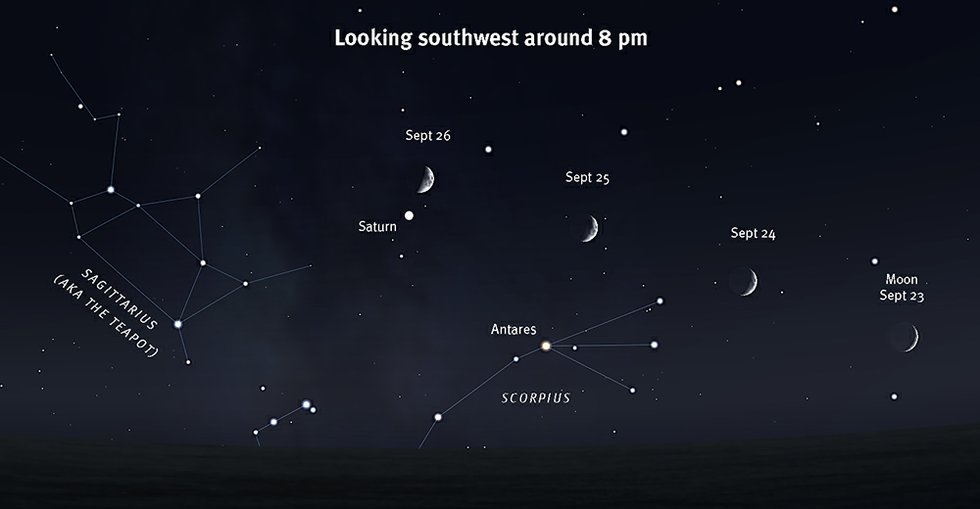
Fall officially starts with the autumnal equinox on Sept. 22, when Earth’s axis is “perpendicular” to the sun, not tilted toward or away from it.
The Earth’s tilt doesn’t change, it’s always 23.4° in relation to the plane of its orbit—in other words, Earth goes around the sun “leaning” one way, not upright on its axis. So for half the trip around the sun, the North Pole leans more toward the sun (our summer), and then away from the sun (our winter) the other half. The fall and spring equinoxes are the moments in orbit when Earth’s axis leans neither away nor toward the sun.

We experience equal night and day on Sept. 22, and the sun rises due east and sets due west. This will quickly change. Each day into autumn the sun rises a bit farther south of due east and sets south of due west, and the days grow shorter.
With sunrise a bit before 7 am now, you don’t have to get up unusually early to see the predawn stars and planets. There’s a fabulous sight to catch over the eastern horizon Friday and Saturday, Sept. 22-23, when Mercury, Mars and brilliant Venus make a diagonal line with the star Regulus (the bottom of the sickle, or backward question mark, of the constellation Leo). See this neat formation at 5:40 am—any earlier and Mercury will be below the horizon, but by 6 am the dawn probably will wash out Mercury and Mars.
Swift moving Mercury soon will move out of sight, while Mars and Venus draw closer until they’re right next to each other on Oct. 5.
In the evenings now, Saturn is hanging between two famous late-summer constellations in the south, Sagittarius (also known as the Teapot) and Scorpius, marked by the bright red star Antares. On Tuesday, Sept. 26, look to the south-southwest to see the crescent moon floating over Saturn.
From now through Monday, Sept. 25, the moon is a thin crescent low in the west (spot Jupiter near the moon, low over the horizon at dusk) and won’t interfere much with star viewing, especially if you wait until it sets around 9-10 pm. Find a dark sky location and enjoy the Milky Way, that hazy band of light running from the northeastern sky, high overhead, and ending in the southwest horizon in Sagittarius—the steam rising from the spout of the teapot. Here you’ll find many deep sky sights to see with binoculars. Happy viewing.




